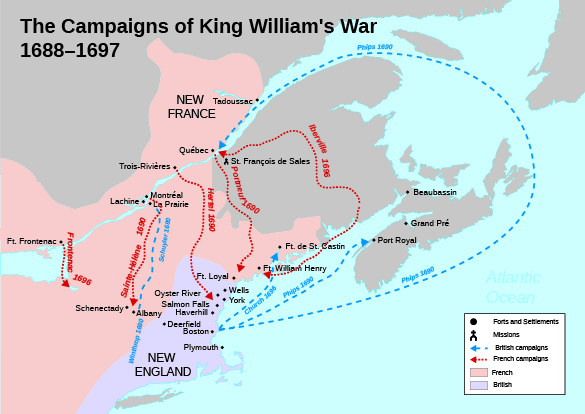| << Chapter < Page | Chapter >> Page > |
Wars for empire composed a final link connecting the Atlantic sides of the British Empire. Great Britain fought four separate wars against Catholic France from the late 1600s to the mid-1700s. Another war, the War of Jenkins’ Ear, pitted Britain against Spain. These conflicts for control of North America also helped colonists forge important alliances with native peoples, as different tribes aligned themselves with different European powers.
Generations of British colonists grew up during a time when much of North America, especially the Northeast, engaged in war. Colonists knew war firsthand. In the eighteenth century, fighting was seasonal. Armies mobilized in the spring, fought in the summer, and retired to winter quarters in the fall. The British army imposed harsh discipline on its soldiers, who were drawn from the poorer classes, to ensure they did not step out of line during engagements. If they did, their officers would kill them. On the battlefield, armies dressed in bright uniforms to advertise their bravery and lack of fear. They stood in tight formation and exchanged volleys with the enemy. They often feared their officers more than the enemy.
Read the diary of a provincial soldier who fought in the French and Indian War on the Captain David Perry Web Site hosted by Rootsweb. David Perry’s journal, which includes a description of the 1758 campaign, provides a glimpse of warfare in the eighteenth century.
Most imperial conflicts had both American and European fronts, leaving us with two names for each war. For instance, King William’s War (1688–1697) is also known as the War of the League of Augsburg. In America, the bulk of the fighting in this conflict took place between New England and New France. The war proved inconclusive, with no clear victor ( [link] ).

Queen Anne’s War (1702–1713) is also known as the War of Spanish Succession. England fought against both Spain and France over who would ascend the Spanish throne after the last of the Hapsburg rulers died. In North America, fighting took place in Florida, New England, and New France. In Canada, the French prevailed but lost Acadia and Newfoundland; however, the victory was again not decisive because the English failed to take Quebec, which would have given them control of Canada.
This conflict is best remembered in the United States for the French and Indian raid against Deerfield, Massachusetts, in 1704. A small French force, combined with a native group made up of Catholic Mohawks and Abenaki (Pocumtucs), attacked the frontier outpost of Deerfield, killing scores and taking 112 prisoners. Among the captives was the seven-year-old daughter of Deerfield’s minister John Williams, named Eunice. She was held by the Mohawks for years as her family tried to get her back, and became assimilated into the tribe. To the horror of the Puritan leaders, when she grew up Eunice married a Mohawk and refused to return to New England.

Notification Switch
Would you like to follow the 'U.s. history' conversation and receive update notifications?